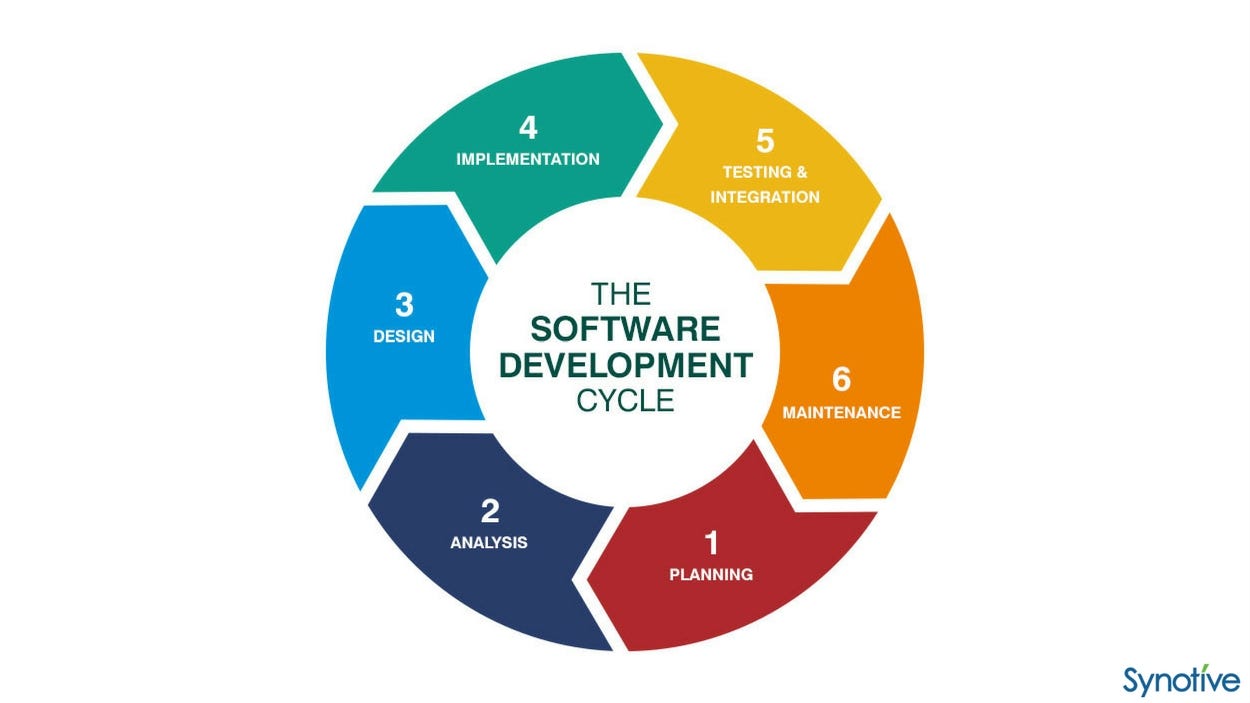Software Development Life Cycle (SDLC) is a process used to guide the development of software. It is a framework that outlines the different stages and activities that are involved in creating software. The SDLC typically includes planning, analysis, design, implementation, testing, deployment, and maintenance. By following the SDLC, software development teams can ensure that the software they create meets the required specifications, is reliable and scalable, and is delivered on time and within budget.
The Phases of SDLC include:
Planning
Planning is the first phase of the Software Development Life Cycle (SDLC) that involves defining the scope and objectives of the project, analyzing the feasibility of the project, and developing a plan to guide the project from start to finish. In this phase, the software development team works closely with the project stakeholders to gather and analyze the project requirements, assess the risks involved, and identify the resources required to complete the project successfully
The key activities involved in the planning phase include:
● Defining the scope and objectives of the project
● Identifying the project stakeholders and their roles and responsibilities
● Gathering and analyzing the project requirements
● Assessing the feasibility of the project
● Identifying the resources required for the project, such as personnel, hardware, and software
● Creating a project plan that outlines the project timeline, budget, and resources required
● Developing a risk management plan to identify and mitigate potential risks
● Creating a communication plan to ensure that all stakeholders are informed of the project’s progress
Analysis
Analysis is the second phase of the Software Development Life Cycle (SDLC) that involves a detailed study of the project requirements gathered during the planning phase. In this phase, the development team analyzes the requirements to identify the functional and non-functional requirements of the software and develops a software specification document that outlines the software’s functionality, performance, and design.
The key activities involved in the analysis phase include:
● Reviewing the project requirements to ensure they are clear, complete, and consistent
● Identifying the functional and non-functional requirements of the software
● Defining the software architecture and system design ● Developing use cases and user stories to describe the software’s functionality
● Creating a software specification document that outlines the software’s features, performance, and design
● Conducting a feasibility study to ensure that the software is technically and financially feasible
Design
Design is the third phase of the Software Development Life Cycle (SDLC) that follows the analysis phase. In this phase, the software specification document developed in the analysis phase is used to create a detailed design of the software.
The design phase includes defining the software architecture, data structures, algorithms, user interfaces, and other elements of the software.
The key activities involved in the design phase include:
● Translating the software requirements into a detailed design
● Developing the software architecture and system design
● Defining the data structures and algorithms used in the software
● Designing the user interface and user experience
● Developing the software components and modules
● Identifying the external interfaces required by the software
● Preparing the design document that describes the software design
Implementation
Implementation is the fourth phase of the Software Development Life Cycle (SDLC) that follows the design phase. In this phase, the software design is translated into code, and the software is built according to the specifications and requirements outlined in the design document.
The key activities involved in the implementation phase include:
● Writing code based on the software design
● Developing software components and modules
● Integrating the software components and modules into the complete software system
● Conducting unit testing to ensure that each component of the software works correctly
● Conducting integration testing to ensure that the software components work together as expected
● Creating user documentation and other support materials
● Conducting user training to ensure that users understand how to use the software
Testing
Testing is the fifth phase of the Software Development Life Cycle (SDLC) that follows the implementation phase. In this phase, the software is thoroughly tested to ensure that it meets the requirements and specifications outlined in the design document.
The key activities involved in the testing phase include:
● Conducting functional testing to ensure that the software meets the functional requirements outlined in the design document
● Conducting non-functional testing to ensure that the software meets the non-functional requirements such as performance, security, usability, and compatibility
● Conducting regression testing to ensure that the changes made during the implementation phase have not introduced any new defects
● Conducting acceptance testing to ensure that the software meets the user’s needs and requirements
● Conducting usability testing to ensure that the software is easy to use and understand
● Creating test cases, test plans, and other testing documentation
Deployment
Deployment is the sixth phase of the Software Development Life Cycle (SDLC) that follows the testing phase. In this phase, the software is released to the end-users, and the software is made available for use. The key activities involved in the deployment phase include:
● Preparing the software for release, including packaging, installation, and configuration
● Deploying the software to the end-users
● Providing user training and support
● Monitoring the software to ensure that it is working correctly and addressing any issues that arise
● Creating and maintaining user documentation and other support materials
Maintenance
Maintenance is the seventh and final phase of the Software Development Life Cycle (SDLC) that follows the deployment phase. In this phase, the software is maintained and updated to ensure that it continues to meet the needs of the end-users.
The key activities involved in the maintenance phase include:
● Identifying and fixing defects and issues that arise in the software
● Enhancing the software to add new features or functionality
● Updating the software to address changes in the operating environment, such as new hardware or software platforms
● Providing user support and training
● Conducting ongoing testing and monitoring to ensure that the software continues to meet the user’s needs
Compiled by Stephen Afape



